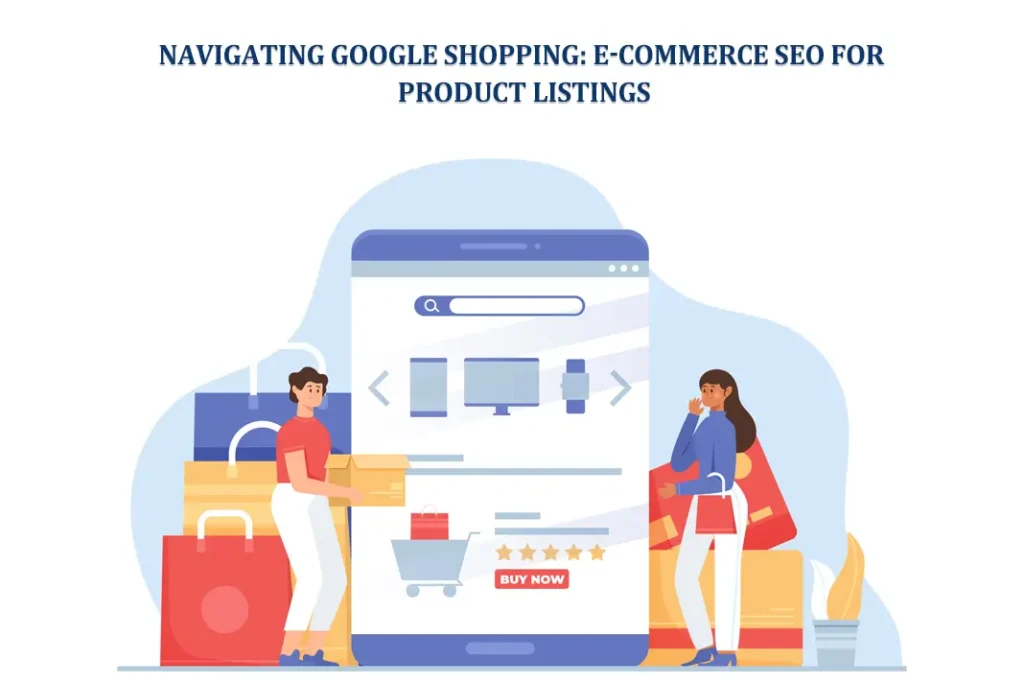Step into Google Shopping, where each click holds the potential for your products to shine.
Making your products visible isn’t just about being seen; it’s about winning in online sales.
Imagine your products catching people’s eyes, among many others online. This guide will show you how to use Google Shopping and its SEO strategies to make your products irresistible to customers.
Discover the secrets that turn regular product listings into one’s customers can’t resist buying.
Are you excited to learn these strategies to make your business a star in online shopping?
1. Structured Data Optimization
Structured Data Optimization involves organizing information on your website clearly so search engines understand it better. It uses unique tags to label details like product names, prices, and ratings.
This helps search engines display more helpful info in search results, like star ratings or product availability. It makes your listings look better and stand out to people searching for products.
Using unique codes for your products, like GTINs and MPNs, helps search engines match your items accurately to what users seek.
By organizing your data neatly, your products become more visible in relevant searches, making it easier for potential customers to find and choose your products over others.
2. Feed Optimization Techniques
Feed Optimization Techniques involve improving the data you provide to shopping platforms. It’s about ensuring the information about your products, like their names, prices, and descriptions, is accurate and precise.
These techniques use tools to help automate updating and refining this data. Utilizing the WooCommerce side cart further enhances these techniques by streamlining the data updating process. Dynamic remarketing feeds personalize ads based on what users have looked at before, making them more likely to buy.
These optimizations ensure that your product information is up-to-date and in the best shape for showing up when people search for similar products.
Using these techniques, you can make your products more visible and appealing to potential buyers, boosting your sales and business performance.
3. Advanced Keyword Strategies
Advanced Keyword Strategies mean using unique methods to choose the best words related to your products for online searches. It involves understanding phrases people might use when looking for items like yours.
This strategy goes beyond basic terms and includes more detailed and specific keywords to match customers’ searches. It also involves keeping an eye on trends and seasons to adjust your keywords accordingly.
Using these advanced strategies, you can make your product listings appear more often when customers search for similar things, increasing their chances of finding and buying your products.
This helps attract the right customers to your website and improves your chances of making sales.
4. Enhanced Bidding and Campaign Management
Enhanced Bidding and Campaign Management means using more innovative ways to control how much you’re willing to spend on ads and how you manage your advertising plans.
It involves using tools to automatically decide the right amount to bid on ads based on their performance. Custom labels help sort products for better control over ad campaigns, ensuring ads for specific products reach the right people.
These strategies include dividing your advertising efforts into smaller parts to manage better and improve performance.
Using these advanced methods, you can spend your advertising money more effectively, focusing on the best ads and reaching more potential customers.
5. Advanced Audience Targeting
Advanced Audience Targeting involves using intelligent ways to show your ads to specific groups of people. It uses data to find and reach those most likely interested in your products.
Custom audiences are created based on factors like behavior or interests to target groups effectively. Similar audiences help find new people like your existing customers, expanding your reach.
These methods show ads to the right people, making them more likely to buy. This strategy helps businesses spend their advertising money more wisely by focusing on reaching the audience most likely to be interested in their products or services.
Ultimately, this can lead to more sales and business growth by targeting the right customers effectively.
6. Analytics and Attribution
Analytics and Attribution involve using methods to understand how customers find and buy products. It means tracking and analyzing data from different touchpoints to see what leads to a purchase.
This includes figuring out which ads or pages customers interact with before buying. Businesses can better see what influences a sale by using various models, such as time-based or position-based models, to understand this journey.
Cross-device tracking helps to understand how customers switch between phones, computers, or tablets before purchasing.
By using these intelligent analytics, businesses can better know what convinces customers to buy, allowing them to focus on the most effective marketing strategies, leading to increased sales and more intelligent business decisions.
7. Competitive Analysis and Benchmarking
Competitive Analysis and Benchmarking involve studying and comparing how your business performs against others in the same market. It means looking at what your competitors are doing – their strategies, strengths, and weaknesses.
This analysis helps identify where your business stands relative to others and what areas need improvement. Understanding your competitors allows you to find opportunities and adapt your strategies to stay competitive.
It also involves monitoring their pricing, marketing tactics, and customer offerings to adjust your plans for better results.
This process allows businesses to learn from others’ successes and failures, guiding them to make smarter decisions to stand out in the market and attract more customers.
8. Optimization for Google’s New Features
Make the best use of Google’s latest tools and options for advertising and showcasing your products.
It involves staying updated with Google’s latest features, such as new ad formats or tools, and using them to improve how your products are presented to customers.
For instance, exploring new ad formats like Showcase Shopping Ads or Local Inventory Ads to display your products differently can attract more attention.
By adapting to these new options and experimenting with visual content or video ads, businesses can grab customers’ interest more effectively.
This process helps you stay ahead of the competition and reach potential buyers more engagingly.
9. International Expansion and Localization
Grow your business to reach customers in different countries and adapt your products or services to suit their needs.
Expanding internationally involves selling your products or services in other countries beyond your home market.
Localization is customizing your offerings to fit different regions’ languages, cultures, preferences, and regulations.
It includes translating content, adjusting prices to local currencies, and considering differences in sizes, colours, or features that appeal to diverse audiences.
By expanding and localizing, businesses can attract more customers globally, improve brand awareness, and increase sales in new markets.
This process requires understanding and adapting to various cultural norms and preferences, ensuring that your business resonates with customers worldwide.
Conclusion
Mastering Google Shopping’s SEO for product listings can transform your business. Applying these strategies makes your products magnets for eager buyers, boosting sales and visibility.
Keep optimizing your listings, stay updated with new features, and track performance to improve continuously.
With compelling titles, clear descriptions, and strategic keyword use, your products will shine amidst the competition.
Embrace these techniques, and watch your online business thrive in the ever-evolving world of e-commerce. Start implementing these tactics today to propel your business towards long-term success on Google Shopping.





